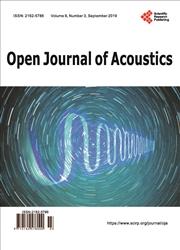Comparison of Tongue and Lip Trills with Phonation of the Sustained Vowel /ε/ Regarding the Periodicity of the Electroglottographic Waveform and the Amplitude of the Electroglottographic Signal
引用次数: 8
Abstract
Aim: The aim is to compare the vocal fold vibration seen during lip and tongue trills with that seen during phonation of the sustained vowel /e/, in terms of the periodicity of the EGG waveform and the amplitude of the EGG signal, in professional voice users. Study design: This was a quasi-experimental study. Methods: We used electroglottography (EGG) to compare the vocal fold vibration seen during tongue and lip trills with that seen during phonation of the sustained vowel /e/, in terms of the EGG waveform periodicity and signal amplitude, in 10 classically trained, professional singers. The participants produced the sustained vowel /e/ and performed tongue and lip trills at the same frequency and intensity. The periodicity of the waveform and the amplitude of the signal were visually analyzed by three blinded, experienced readers. To confirm the visual analysis results, we measured the jitter and shimmer of the signal and the frequency of variation in vocal fold vibration during the trill exercises. Results: The EGG waveform was classified as periodic for the sustained vowel phonation task and as quasi-periodic for the trill exercises, the vibration pattern repeating at approximately 24 Hz. Conclusion: The vibration of the vocal folds was modified according to the supraglottic movement in trills exercises.舌、唇颤音与持续元音的比较/ε/关于声门电波形的周期性和声门电信号的振幅
目的:目的是比较专业语音使用者在发持续性元音/e/时所看到的声带振动,以及EGG波形的周期性和EGG信号的幅度。研究设计:这是一项准实验研究。方法:采用声门电图(EGG)对10名受过正规训练的专业歌手在发持续性元音/e/时与舌、唇颤音时的声带振动波形周期和信号幅度进行比较。参与者发出持续的元音/e/,并以相同的频率和强度进行舌头和嘴唇的颤音。波形的周期性和信号的幅度由三个盲的、有经验的读者进行视觉分析。为了证实视觉分析结果,我们测量了颤音练习中信号的抖动和闪烁以及声带振动变化的频率。结果:EGG波形在持续元音发声任务中被归类为周期性,在颤音练习中被归类为准周期性,振动模式在大约24赫兹的频率上重复。结论:根据颤音练习中声门上运动的特点,可以调整声带的振动。
本文章由计算机程序翻译,如有差异,请以英文原文为准。
求助全文
约1分钟内获得全文
求助全文

 求助内容:
求助内容: 应助结果提醒方式:
应助结果提醒方式:


